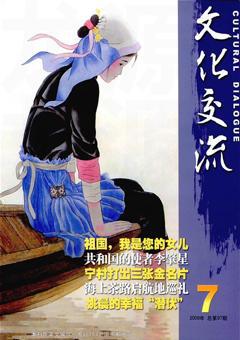Copies Testify the World’s Discovery of Giant Panda
By Zhi Yuan


Father Jean Pierre Armand David (1826-1900), a French Jesuit missionary priest, is known as the panda discoverer. He first saw a fur of the strange animal in Dengchigou, a remote mountain valley in western Sichuan Province in southwestern China.
It was no accident that Father David ran into the rare species from the ancient eras in Dengchigou. The first French priest came to do the missionary work in the area in 1802. He died in 1829. Dengchigou became a center of the French missionary work in western Sichuan Province. In 1839, a French catholic organization in the Far East had a church built secretly in Dengchigou. The church also doubled as a school for local parishioners to study Catholicism. In February, 1862, the 36-year-old Father David left for China. He was more than a missionary priest. He was also a naturalist. In November 1868, David entered Sichuan by sailing upward the Yangtze River. In December, he reached Chongqing, a gateway city in eastern Sichuan. It was in Chongqing that he learned that Muping had both rich flora resources and a French missionary station. After the New Years Day, he traveled west. He reached Chengdu, the capital city of the province. After taking a break there and searching for specimens in Pengxian northwest of Chengdu for a short while, he headed for Muping in February 1869.
Shortly after his arrival at Dengchigou church, he jotted down his first witness of the fur of an animal he had never seen before. The writing is dated March 11, 1869. He wrote that on his way back to the church he was invited for tea to the house of a man named Li, a major landlord in the valley. The French priest saw the fur of a black-white bear at the house. It looked very outlandish. The hunters told him that he would see a living animal very soon. He learned that hunters would go and kill a panda the next day. Father David predicted that it might be an interesting new species in science.
On March 23, a dead black-white bear was brought to him. Father David was overjoyed. He was certain that it was a new bear species. He named it the black-white bear. The specimen with a text report was sent back to Miller Edwards in Paris. It was the first time the West saw such a creature.
After hunting for two weeks in the eastern Muping (the present-day East River of Baoxing County), the hunters captured a living panda and six monkeys. Father David examined the most incredible creature and jotted down data concerning its weight, health, etc. The panda died. Father David sent the fur and a report to the Paris Museum national d'Histoire naturelle. The report was published by the museum in a newsletter. The fur was exhibited. No one in the west had ever seen such a creature.
Professor Miller Edwards studied the fur and bones of the creature and concluded that it was by no means a bear species. In a paper published in 1870, Miller Edwards named it Giant Panda. The discovery wowed the world. The western scientists at last confirmed that some animals left over from the Ice Age were still living in the distant Orient.
Father David fell sick in 1872. Two years later he retired to France. In 1877, his book in two volumes on birds in China was published. The book records 772 avian species, 60 of which had never been seen before. The book also describes 200 species of mammals, 63 of which were new to science. From 1884 to 1888, Father David published a book on plants. The books have been roadmaps for scholars who visit the Jiajin Mountains in western Sichuan Province.
In November 2001, a delegation from his hometown Ezpeleta, France came to visit the Dengchigou, Baoxing County. It was more than 100 years after the demise of Father David. In November 2002, a Chinese delegation visited Ezpeleta. The group visited the Paris Museum national d'Histoire naturelle where the Chinese from the hometown of the panda saw the panda specimen from Baoxing County and other documents.
Sun Qian, a vice mayor of Yaan, wondered if it was possible to have the copies of Father Davids report and Professor Miller Edwards evaluation report. He thought the copies could be used as cultural symbols for the Jiajin Mountains, the hometown of the Giant Panda. For Sun Qian, the copies are like the birth certificates of the Giant Panda.
He first approached the French Embassy in China and the French Consulate General in Chengdu. He also tried to seek the assistance of some Chinese in France. He turned to the Paris Museum national d'Histoire naturelle. All came to nothing.
He Fenqi, an ornithologist with the ornithological institute under the China Academy of Sciences, helped Sun Qian. The ornithologist approached two friends at the UNESCO. Finally, the Paris Museum national d'Histoire naturelle provided the copies of the two original documents.
On February 27 and 28, 2009, the copies were ceremoniously placed at the Dengchigou Catholic Church and the Bixiafeng Base of the China Panda Conservation Research Center. The donation ceremony was held respectively at the two places.□

